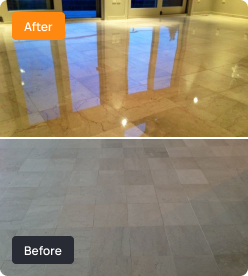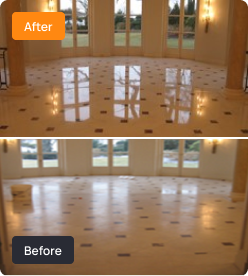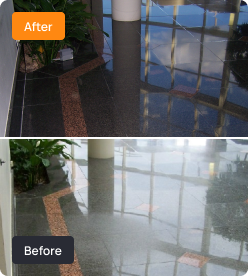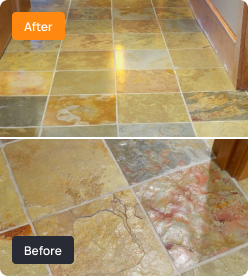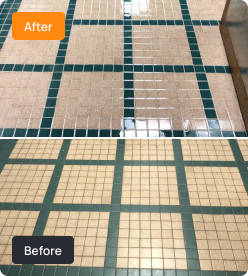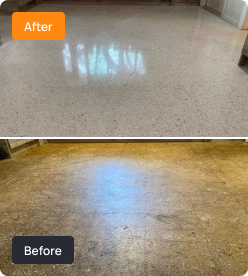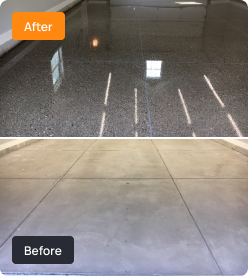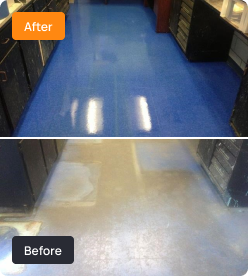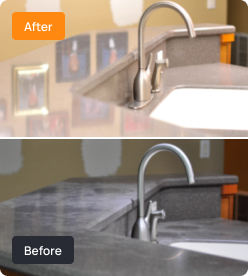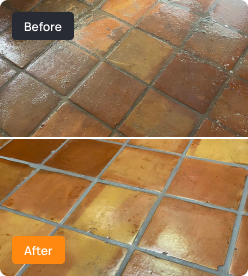Marble Restoration Myths Debunked: Does Polishing Produce Dust?
Worried About Dust? With MARBLELIFE’s Marble Restoration Process technology, dust isn’t an issue. Many homeowners hesitate to restore their marble surfaces, fearing the process will envelop their homes in dust. This concern is common; the misconception that marble restoration, especially polishing, is inherently messy and dust-filled has deterred many from pursuing the lustrous finish their […]
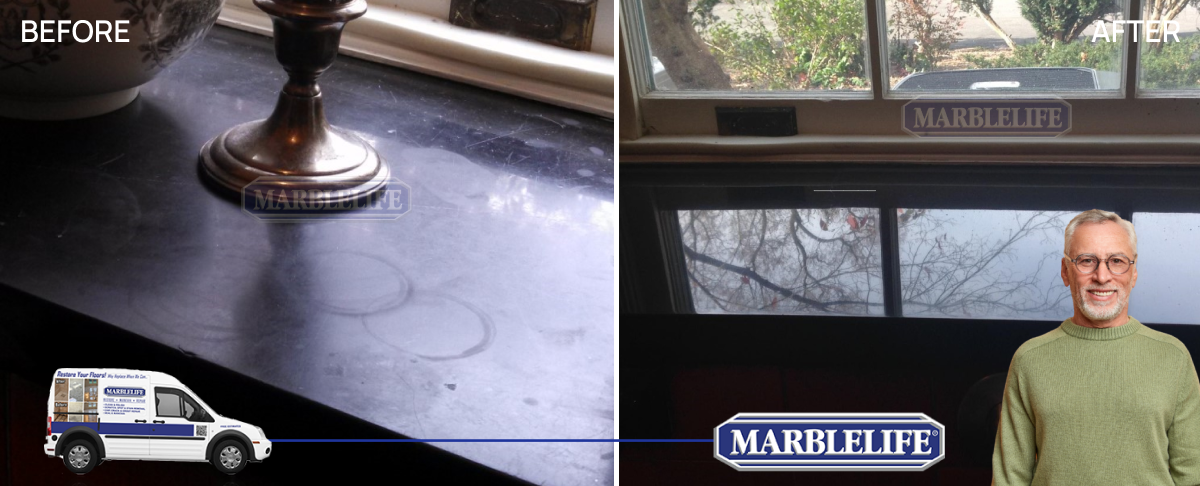

Worried About Dust?
With MARBLELIFE’s Marble Restoration Process technology, dust isn’t an issue.
Many homeowners hesitate to restore their marble surfaces, fearing the process will envelop their homes in dust. This concern is common; the misconception that marble restoration, especially polishing, is inherently messy and dust-filled has deterred many from pursuing the lustrous finish their surfaces could achieve. Comparing it to the dustiness of sanding wood—a process known to be messy—some might not realize that marble restoration technology has evolved into a dust-free procedure decades ago.
Is modern marble polishing as dusty as believed?
This blog aims to dispel marble restoration myths and illuminate how contemporary polishing techniques can rejuvenate your stone’s shine without creating a mess.
About Marble Polishing
Fundamentally, marble polishing is restoring the natural luster and beauty of marble surfaces that have become dull over time. It removes microscopic layers affected by wear, scratches, or etches, restoring a smooth, reflective finish. Advances in polishing technology have paralleled those in dental care, offering cleaning, polishing, and even hardening treatments—all achievable without dust.
From Past to Present
Historically, marble polishing was laborious, often requiring manual sanding with abrasive materials like pumice or sandstone. Effective to a degree, this method was undeniably slow and dusty. Fast forward to the present, and the evolution of marble polishing is remarkable. The advent of advanced diamond technology and precision equipment, coupled with water to trap fines, has revolutionized this once-basic process into a clean and efficient operation.
Modern Tools and Techniques
Nowadays, marble polishing is a precision task involving advanced tools and techniques for a flawless finish with minimal mess. The process starts with diamond abrasive pads, which are used wet to minimize dust by capturing it as slurry, making cleanup straightforward. This method is not about flooding the area but using water judiciously to keep the process contained and efficient.
Work is typically done in manageable sections, ensuring that access and safety are maintained even in busy buildings. This consideration is crucial when uninterrupted access to essential areas like elevators and desks is necessary.
In addition to mechanical polishing, modern materials and sealers play a significant role. Today’s polishing products can chemically refine the marble’s surface quickly, complementing the mechanical smoothing and speeding up the restoration. Sealing technologies are then applied to shield the stone from spills and stains, augmenting its resilience and aesthetic appeal.
The transition from manual sanding to sophisticated, wet polishing techniques has enhanced both the process’s effectiveness and its cleanliness, eliminating the dust concerns of the past. Now, it’s possible to work near walls, baseboards, and doors without the risk of water damage or dust spread, ensuring a pristine finish without the cleanup worries.
The Myth of Dusty Polishing
The belief that “marble polishing equals a dusty mess” has long clouded the perception of marble restoration, settling over the process like a fine, albeit unwelcome, layer of dust. This notion can be traced back to the traditional marble polishing methods that leaned heavily on dry grinding techniques and manual labor. Such methods generated substantial dust as abrasive materials were vigorously applied to marble surfaces without any dust containment or suppression measures. Consequently, the visualization of a room engulfed in a dust cloud post-restoration was not an exaggeration but a reality of those times, cementing the belief that reviving marble’s shine was synonymous with filling your space with airborne particles.
Modern Innovations Clear the Air
Today, the field of marble polishing has transformed dramatically, with advancements in technology and technique dispelling the long-standing myth of dusty restorations. The modern approach to marble polishing employs cutting-edge equipment and wet polishing methods that drastically reduce or eliminate dust production.
Wet polishing stands out as a pivotal advancement in minimizing dust. This technique, where water acts as a lubricant between the polishing pads and marble, not only captures dust particles, preventing them from becoming airborne, but also enhances the polishing efficiency. The result is a glossier, smoother finish, with dust in a manageable slurry form, easily removed without dispersing into the air. The distinction between field restoration of stone and other operations like countertop fabrication or concrete polishing highlights the tailored evolution of each domain for optimal outcomes and safety considerations.
Granite countertop fabrication, for example, is a stationary operation utilizing water-fed or air-powered tools in a controlled environment. Safety protocols mandate water use to capture potentially harmful granite dust, which contains silicates. Conversely, concrete polishing might be performed dry, employing large vacuums to capture dust, a method often utilized early in building construction due to its efficiency and inline vacuum processes.
The shift from dry to wet polishing, along with the use of specialized equipment, has effectively debunked the dusty polishing myth. Contemporary marble polishing is not only cleaner and safer but also more eco-friendly, showcasing the industry’s progress towards maintaining marble’s allure without the mess.
Exploring Marble Polishing Techniques
The realm of marble polishing has seen revolutionary changes, adopting techniques that prioritize achieving a flawless sheen in a cleaner and more efficient manner.
Wet Polishing
Central to the modern marble polishing methodology is wet polishing, a process that integrates water to serve several critical functions. Water acts as a lubricant, minimizing friction and the risk of marble overheating or the diamond surface of the pads becoming glazed. Crucially, it captures dust at the source, significantly reducing the potential for airborne dispersal and resulting in a notably tidier operation. Moreover, this method achieves a superior finish on the marble surface. Having been in use for over two decades, wet polishing is now a well-established and thoroughly understood technique in the industry.
Discover more about how MARBLELIFE experts can assist with Marble, Travertine, and Terrazzo polishing and restoration through this informative video:
Dust-Containment Systems
Modern concrete polishing and its associated dry polishing methods benefit significantly from integrating dust-containment systems. These systems, built into contemporary polishing equipment, are designed to capture dust at the moment of creation. They draw air through the grinding head during operation, funneling all air and dust particles through an efficient filtering system. This technology is precious in large-scale projects within buildings prepared for public access, ensuring a clean environment from the outset.
The Crucial Role of Professional Equipment and Skilled Technicians
The success of modern marble polishing heavily relies on the combination of advanced equipment and the expertise of skilled technicians. With over 35 years at the forefront of the marble restoration industry, MARBLELIFE has not only contributed to the development of many current techniques but continues to innovate in the grinding, polishing, maintenance, and care of hard surfaces—including marble, natural stone, ceramic, grout, concrete, and terrazzo. Advancements match the evolution of training processes, equipping MARBLELIFE’s technicians with unparalleled skills. Leading the field with the most offices, trained technicians, and completed projects in North America, MARBLELIFE is a testament to excellence and innovation in surface restoration.

Advantages of Low-Dust Polishing Methods
Dust management has been a paramount concern since the industry’s inception, driving the development of methods that minimize cleanup needs by addressing dust production at its source. The benefits of these low-dust techniques are multifaceted:
- Health and Aesthetic Benefits: Reducing dust production is vital not just for the visual appeal of the restored area but for the health and safety of occupants and workers alike. A cleaner work environment during restoration benefits everyone involved, mitigating potential health risks associated with airborne particles.
- Efficiency and Comfort: By managing dust at its origin, MARBLELIFE avoids the complications of airborne dust, simplifying the cleanup process with water containment strategies that allow for easy vacuuming. This approach ensures a project is left cleaner than it was found and enhances the working conditions for technicians, contributing to higher productivity and job satisfaction. A comfortable, dust-free environment is conducive to retaining skilled technicians, aligning with MARBLELIFE’s commitment to family and business values through extensive training and a focus on technician welfare.
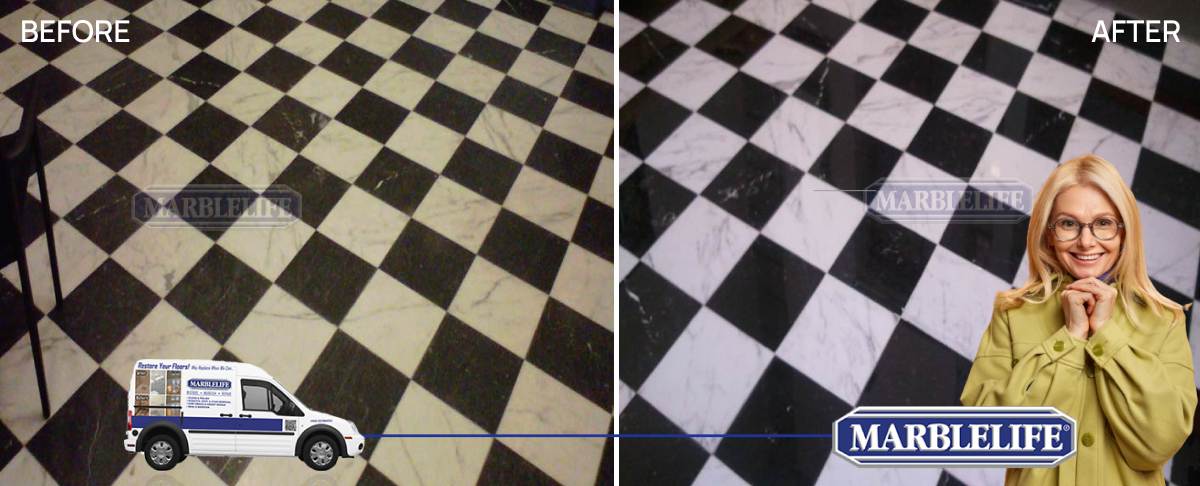
Selecting the Ideal Restoration Service
Choosing the right marble restoration service is critical for achieving the desired outcome for your marble surfaces. The ideal service provider will restore your marble’s brilliance efficiently and with minimal disruption, ensuring a seamless process from start to finish. Here’s what to consider to make an informed choice:
- Look for a service with a proven track record of innovation and success in the industry.
- Ensure the provider uses the latest in low-dust polishing techniques and equipment.
- Assess the level of expertise and training of their technicians.
- Opt for a company that prioritizes both the quality of the restoration work and the health and safety of its clients and staff.
With these considerations in mind, homeowners can confidently select a marble restoration service that aligns with their expectations, securing the beauty and longevity of their marble surfaces.
Questions to Guide Your Decision
When seeking a service provider that aligns with your expectations for marble restoration, it’s essential to ask the right questions:
What dust-minimizing techniques do you employ?
Understanding their approach to dust minimization reveals their commitment to modern and clean methods. Dry grinding with vacuum systems is effective, but even a 99% efficiency rate means there could be residual dust. Wet capture methods, where dust is immediately trapped in water as it’s generated, offer 100% effectiveness. The comprehensive approach should always conclude with thorough cleaning and sealing.
Can you describe your marble restoration process?
Their explanation will provide insights into their expertise level and ability to customize the process to meet specific needs. MARBLELIFE’s trained craftsmen are well-versed in the science behind each step, enabling them to adapt their methods to each unique situation. This adaptability is crucial, especially when unforeseen issues arise that necessitate expert intervention.
Do you offer a free assessment or consultation?
MARBLELIFE distinguishes itself with over 30 years of free consultations, believing that an informed client will likely become a long-term client. These consultations are invaluable for diagnosing the root cause of surface issues, recommending corrective actions, and advising on proper care to prevent future problems. Understanding the interaction between your environment and the marble surface can empower you to maintain its beauty and integrity over time.
Unique Positioning of MARBLELIFE
MARBLELIFE is unique as both a product formulator and a service provider. Inappropriate cleaning products necessitate a significant portion of our service, which is a driving force behind our entry into product formulation. Moreover, many online searches for care products are initiated when the underlying issue is a damaged or improperly treated surface that requires professional restoration to regain its cleanability.
Achieving a Clean Surface Requires:
- A Cleanable Surface: This means the surface must be free of waxes, etches, or any coatings that can hinder cleaning.
- A Sealed Surface: Unsealed surfaces can trap dirt within their pores, making them appear dirty even after cleaning. Sealing these pores is essential for true cleanability.
- An Effective Cleaning Method: Proper mopping technique is a common area of training. Emphasizing the use of a damp mop rather than a wet one ensures dirt adheres to the mop and can be rinsed away effectively.
- Safe and Effective Cleaning Materials: Specialized cleaners may be necessary for challenges like soap scum, mold stains, or grout stains before a daily cleaner can maintain the surface.
By addressing each challenge individually, homeowners can regain control over their cleaning routines without risking damage to their surfaces with unsuitable products. A conversation with a MARBLELIFE representative can often illuminate a path to restoring your surface’s cleanability and beauty.

What experience do you have with similar marble projects?
Assessing a service provider’s experience with similar marble projects is vital for ensuring they can effectively meet your specific needs. With an extensive network of over 40 offices in more than 55 metro areas, supported by hundreds of technicians and thousands of completed projects, MARBLELIFE’s experience is unparalleled in the industry. Measuring experience in man-centuries, MARBLELIFE stands in a league of its own, far surpassing competitors who might count their experience in mere person-years. In North America, no one matches MARBLELIFE’s breadth of experience.
Why Choose MARBLELIFE® for Maintenance?
Selecting MARBLELIFE® products for the post-restoration care of your marble surfaces is a decision for simplicity, efficacy, and durability. These products are crafted with your marble’s well-being in mind, ensuring that maintaining its brilliance and safeguarding against damage is straightforward and effective. Your MARBLELIFE representative will guide you through the essential products for your surface’s care.
Why Trust MARBLELIFE?
MARBLELIFE distinguishes itself in the marble restoration industry for several compelling reasons:
- Expertise and Training: Our technicians undergo rigorous training in the latest restoration techniques at our advanced R&D facility in Sanford, Florida, guaranteeing top-tier knowledge for your project.
- Prestigious Portfolio: Our successful collaborations with esteemed clients, including the Rockefeller Center and Marriott, testify to our ability to excel in every restoration challenge.
- Diagnostic Excellence: We save you time and effort with free assessments by precisely identifying your marble’s requirements for a focused and efficient restoration.
- Comprehensive Care: As the largest residential service provider in marble restoration globally, our extensive experience and resources position us to rejuvenate any marble surface, ensuring exemplary results consistently.
Choosing MARBLELIFE means opting for a restoration service that merges advanced techniques, profound experience, and a commitment to customer satisfaction, revitalizing your marble with elegance and efficiency. Entrust your marble restoration to us to ensure it’s in the most capable hands.
Contact our MARBLELIFE experts today at 888-463-2780 for a FREE CONSULTATION, and let us demonstrate how we can restore your marble quickly and without dust or disruption.
Frequently Asked Questions
1. My Marble Looks Dull. Do I Need More Than a Simple Clean-and-Polish?
The dullness of your marble could stem from various causes, each necessitating a unique approach:
- Waxes: Removal is essential to evaluate the underlying surface, which might already be polished.
- Wear: This results from micro-scratches accumulated over time, requiring honing and polishing for restoration.
- Etches: Caused by acidic substances, etches vary in appearance—ranging from white, smooth marks to rough, chalky indentations—depending on the severity and nature of the acid exposure.
- Scratches: Visible scratches mean a simple clean-and-polish won’t suffice, as polishing alone could exacerbate their appearance. These scratches must be honed out before polishing.
Minor dullness can often be rectified with polishing alone, but more significant damage like scratches demands a honing process before polishing to achieve a flawless finish.
2. What’s the Difference Between “Clean-and-Polish” and “Hone-and-Polish”?
A clean-and-polish service is designed to refresh the marble’s surface, enhancing its shine without delving into deeper surface issues like scratches. This means that pre-existing scratches could remain visible while the marble may appear shinier. In contrast, a hone-and-polish service meticulously removes scratches before polishing, ensuring the surface shines and is smooth and flawless.
MARBLELIFE goes beyond mere surface treatment by offering to seal the marble, enhancing its resistance to staining and wear. Additionally, issues with grout staining and the need for sealing are addressed, with the understanding that grout may require separate treatments based on its condition. This holistic approach significantly improves both the marble’s appearance and its longevity.
3. Can Polishing Eliminate Spots and Dull Areas on My Floor?
Yes. Spots and dull areas are often the result of acid damage or general wear and tear. Despite the visibility of scratches or damage, they are usually no deeper than the width of human hair, making the repair virtually undetectable once the area has been properly repaired and repolished. The restored surface will be seamlessly smooth and reflective, with no trace of the previous damage.
4. What’s the Difference Between Polishing, Waxing, and Coating?
Achieving a glossy appearance is about creating a perfectly flat surface that reflects light accurately.
Waxes attempt to achieve this through a self-leveling coating. However, waxes are prone to scuffing, require regular buffing due to their soft nature, and tend to attract dirt. MARBLELIFE’s methods eliminate the need for wax, offering a more durable finish because it is applied directly to the much harder stone surface.
Polishing, unlike waxing, involves honing the surface flat, resulting in a more complex and durable finish. Polished surfaces can also be spot repaired or repolished, offering a practical advantage over waxed or coated surfaces, which require complete reapplication—and often removal of the previous layer—for repairs, making them more costly and disruptive.
5. How Do “Shine” and “Clarity” Differ in Terms of Marble Finishes?
Shine and clarity are two aspects that define the finish of marble surfaces. Shine refers to the marble’s ability to reflect light, ranging from a brilliant reflection to a softer glow. Clarity, on the other hand, pertains to the sharpness and distinctness of the reflections seen in the marble. MARBLELIFE’s precise honing and polishing processes can achieve such high clarity that it becomes possible to read the label of a light bulb in the reflection of your marble, illustrating the superior quality of finish that can be attained.


